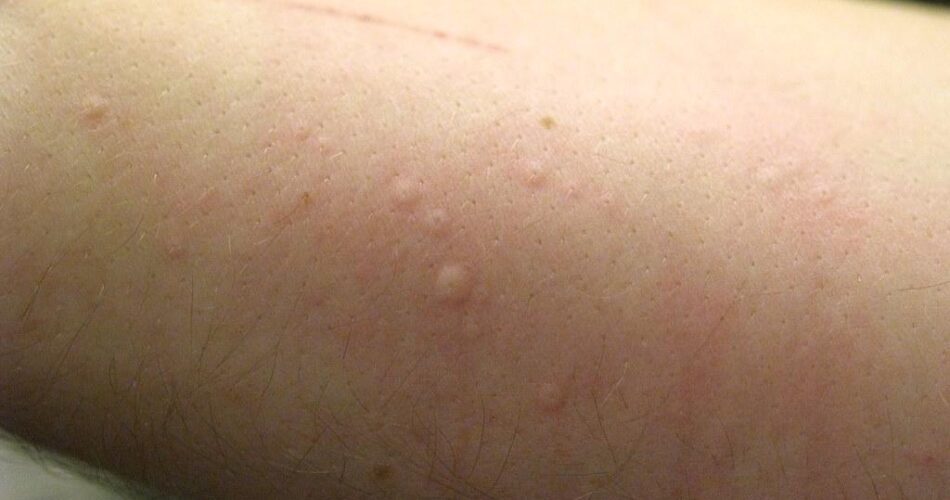Peanuts are a common and delicious snack enjoyed by many, but for some, they can cause dangerous allergic reactions. If you suspect that you or a loved one may have a peanut allergy, fear not! In this article, we will explore how you can test for peanut allergy right in the comfort of your own home. By following these simple steps, you can gain peace of mind and ensure the safety of yourself and your family members when it comes to consuming peanuts.

Identifying Common Symptoms of Peanut Allergy
It is important to be aware of the common symptoms of a peanut allergy in order to take the necessary precautions and seek medical attention if needed. Some of the key signs to watch out for include:
-
- Skin Reactions: Look out for hives, itching, or redness on the skin after peanut exposure.
-
- Respiratory Issues: Difficulty breathing, coughing, or wheezing may indicate an allergic reaction.
-
- Gastrointestinal Problems: Nausea, vomiting, stomach cramps, or diarrhea can also be symptoms of a peanut allergy.
If you suspect that you or a loved one may have a peanut allergy, there are ways to test for it at home. One option is to conduct a skin prick test using a small amount of peanut extract on the skin. Another method is a blood test to measure the immune system’s response to peanuts. However, it is important to consult with a healthcare professional before attempting any at-home allergy tests.
| Severity | Response |
|---|---|
| Mild | Localized itching or hives |
| Moderate | Respiratory distress or vomiting |
| Severe | Anaphylaxis, requiring immediate medical attention |
Understanding the Importance of Testing for Peanut Allergy
Testing for peanut allergy is crucial for individuals who suspect they may have a sensitivity to peanuts. By understanding the importance of testing, you can take proactive steps to manage your allergic reactions and prevent any potential health risks.
One common method of testing for peanut allergy is through a skin prick test, which involves exposing a small amount of peanut extract to the skin and monitoring for a reaction. Additionally, blood tests can also be conducted to measure the presence of specific antibodies that indicate an allergic response to peanuts.
While it is possible to test for peanut allergy at home using DIY kits, it is recommended to consult with a medical professional for accurate and reliable results. These professionals can provide guidance on the best testing methods and help interpret the results to determine the appropriate course of action for managing a peanut allergy.
Exploring DIY Testing Methods for Peanut Allergy
For those interested in DIY testing methods for peanut allergy, there are a few options to consider. One popular method is the skin prick test, which involves pricking the skin with a small amount of peanut extract to see if a reaction occurs. However, it’s important to note that this test should ideally be done by a healthcare professional to ensure accuracy and safety.
Another DIY testing method for peanut allergy is a food challenge, where you carefully introduce small amounts of peanuts into your diet to see if a reaction occurs. This method should also be approached with caution, as severe allergic reactions can be life-threatening. It’s crucial to have emergency medication on hand and to consult with a healthcare provider before attempting this test.
Alternatively, some individuals opt to use an at-home allergy testing kit, which can be purchased online or in pharmacies. These kits typically involve collecting a small blood sample, which is then sent to a lab for analysis. While convenient, it’s important to research the reliability of the kit and consider consulting with a healthcare professional for guidance on interpreting the results.
Interpreting Results and Seeking Professional Advice
When it comes to testing for peanut allergies at home, there are a few different methods you can try. One popular option is to use a skin prick test, where a small amount of peanut extract is placed on the skin and then pricked with a needle to see if a reaction occurs. Another method is a blood test, which can measure the amount of IgE antibodies in the blood that are specific to peanuts.
If you decide to conduct these tests at home, it’s important to interpret the results carefully. If you notice any symptoms such as hives, swelling, itching, or difficulty breathing, it’s crucial to seek professional medical advice immediately. These could be signs of a severe allergic reaction that requires immediate treatment.
Remember, while at-home tests can provide some insight into potential peanut allergies, it’s always best to confirm the results with a healthcare professional. They can provide further testing, diagnosis, and advice on managing any allergies or sensitivities you may have. Your health is too important to take chances with, so always seek professional guidance when it comes to interpreting test results and managing potential allergies.
Creating a Safe Environment for Those with Peanut Allergy
Testing for peanut allergy at home can be a useful way to determine if you or a loved one may have a potential allergy to peanuts. One method is to conduct a skin prick test, where a small amount of peanut extract is placed on the skin and then pricked with a needle. If there is a reaction, such as redness or swelling, it may indicate an allergy.
Another option is a blood test, which measures the levels of antibodies in the blood that are triggered by exposure to peanuts. This can help to confirm a peanut allergy diagnosis. Keep in mind that these at-home tests are not as accurate as tests conducted by a healthcare professional, so it’s important to consult with a doctor if you suspect an allergy.
Creating a safe environment for those with peanut allergies is crucial to preventing potential allergic reactions. This may include carefully checking food labels for traces of peanuts, educating others about the severity of peanut allergies, and always having an emergency action plan in place in case of an allergic reaction. By taking these precautions, you can help ensure the safety and well-being of those with peanut allergies.
Q&A
Q: Can I test for a peanut allergy at home?
A: Yes, you can test for a peanut allergy at home using an at-home test kit.
Q: How do at-home peanut allergy tests work?
A: At-home peanut allergy tests typically involve a simple finger prick blood test that measures levels of antibodies that react to peanuts.
Q: Are at-home peanut allergy tests accurate?
A: While at-home tests can provide some insight into potential peanut allergies, it is always recommended to follow up with a healthcare provider for confirmation and further testing.
Q: What are the benefits of testing for a peanut allergy at home?
A: Testing for a peanut allergy at home can provide quick and convenient results, allowing individuals to take precautionary measures if needed.
Q: What should I do if my at-home peanut allergy test is positive?
A: If your at-home test suggests a peanut allergy, it is important to consult with a healthcare provider for further evaluation and guidance on managing potential allergies.
Q: Can I use at-home peanut allergy tests for children?
A: It is best to consult with a pediatrician before using an at-home peanut allergy test for a child to ensure proper testing and interpretation of results.
Wrapping Up
In conclusion, testing for peanut allergy at home can provide a convenient and cost-effective way to determine if you or a loved one may have a sensitivity to peanuts. However, it is important to note that these at-home tests should not replace a professional diagnosis from a doctor or allergist. If you suspect you have a peanut allergy, it is always best to seek medical advice and guidance for proper testing and treatment. Remember, your health and well-being are worth the extra steps to ensure an accurate diagnosis. So, take care, stay informed, and always put your health first. Thank you for reading!





